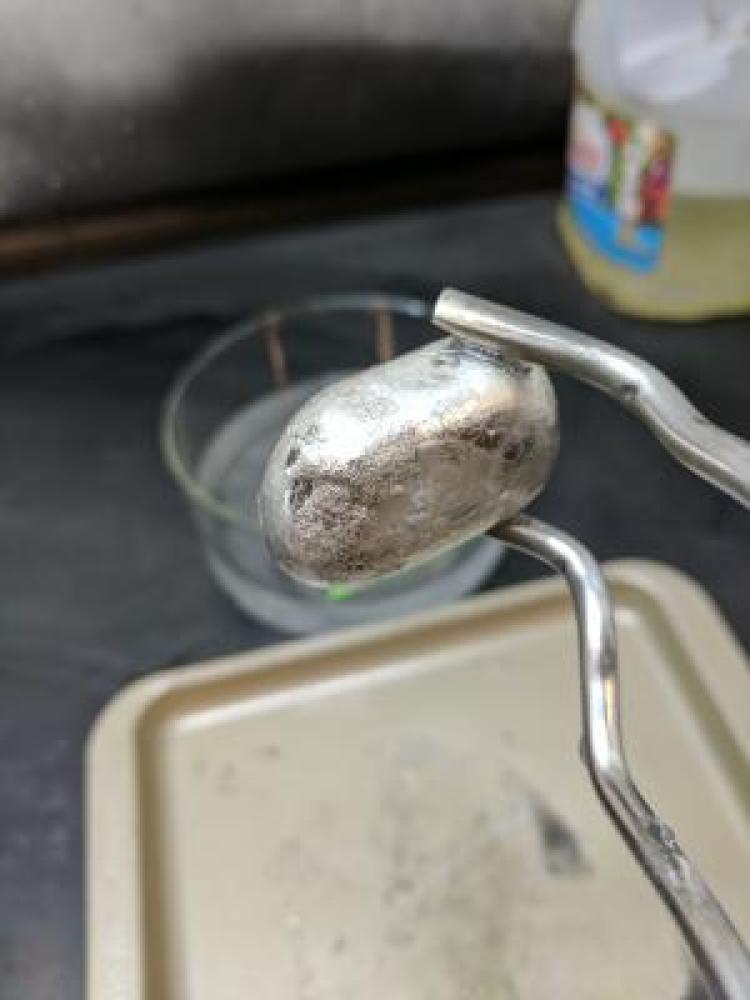A thoroughly modern magnesium process
CU Boulder engineers have revamped a World War II-era process for making magnesium that requires half the energy and produces a fraction of the pollution compared to today’s leading methods.

The breakthrough process, developed in the labs of Professor Alan Weimer, could vastly improve production of the strong, lightweight metal that’s used in everything from vehicles and aircraft to dietary supplements and fireworks.
Now, CU Boulder spinoff company Big Blue Technologies is working to translate the laboratory innovations into a viable commercial-scale enterprise.
“I’m doing it in the lab; I’m seeing the product and seeing the results,” said Boris Chubukov, a graduate researcher in CU Boulder’s Department of Chemical and Biological Engineering and one of Big Blue Technologies’ co-founders. “I know the potential is really there.”
A few different methods currently exist for creating magnesium metal, but the most common one takes ore from the ground, combines it with expensive silicon and uses extremely high heat—around 1200 degrees Celsius—to create chemical reactions and extract the magnesium in small batches.
Recent CU Boulder PhD graduate Aaron Palumbo, along with Chubukov and graduate student Scott Rowe, sought a better way.
They swapped cheap, abundant carbon for the silicon reactant and addressed flaws in the production process, landing on a system that requires much less energy. They also managed to extract magnesium continuously, rather than in batches, and eliminated the solid waste commonly formed.
The Advanced Research Projects Agency-Energy, a division of the U.S. Department of Energy, provided the $3.6 million grant to Weimer’s lab that funded the preliminary research.
The technology could have global economic implications. Metal smelting has increasingly moved overseas, mostly to China, in attempts to reduce the overall cost of manufactured goods. Until the late 1990s, the U.S. was a major world supplier of magnesium, but today, only a single domestic producer remains, according to the U.S. Geological Survey.
But the Big Blue Technologies founders believe this new process could change the equation and they’ve secured almost a half-million dollars so far from backers who agree, Palumbo said. That includes a $225,000 seed grant from the National Science Foundation’s Small Business Technology Transfer program.
“In our economic projections, if you built a plant in the U.S., with current energy prices and fair, first-world labor wages and benefits, we could still produce magnesium cheaper than Chinese product,” Palumbo said. “The U.S. can only begin to ‘bring back manufacturing jobs’ if there is abundant access to cheap raw materials and if we continue to lead in innovative developments for process technology.”
Early this year, the fledgling company formed a partnership with Nevada Clean Magnesium, a publicly traded company, to further develop, test and improve the production method. Big Blue Technologies also won the “Most Impact” award at the Cleantech Open Global Forum in February, the culmination of a yearlong accelerator for early-stage clean technology startups. They also graduated from Catalyze CU, the university’s startup accelerator, in 2015.
Big Blue’s startup environment is decidedly hands-on. The researchers’ basement lab is filled with ultra-hot furnaces and they often end the day with hands covered in grease and grime. But the trio is excited by the possibilities the technology holds.
“The prospect of doing something real-world is very exciting,” Rowe said. “To be able to revive the metals industry in this country would be remarkable, so that had universal appeal for us as graduate students.”


